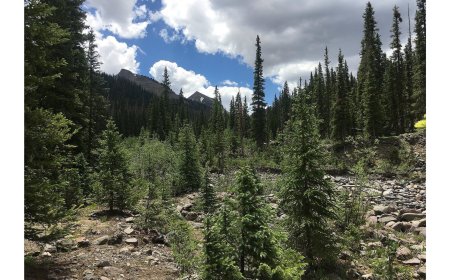How the world looks like When You Reach ABC
Experience the breathtaking views, thin mountain air, and peaceful silence at Annapurna Base Camp (4,130m). Surrounded by towering peaks, vibrant local culture, and fellow trekkers, reaching ABC offers a unique blend of natural beauty, personal achievement, and spiritual reflection on the Himalayas’ grandeur.

How the world looks like When You Reach ABC
Reaching Annapurna Base Camp (ABC) is something you'll never forget. At 4,130 meters (13,550 feet), the air gets thinner, the sky looks clearer, and it's super quiet. You'll find yourself in a natural amphitheater surrounded by some of the tallest mountains on the planet, like Annapurna I, Machapuchare, and Hiunchuli. The way these peaks rise from the glaciers makes everything feel a bit unreal, almost like being on another planet.
Sunrises and sunsets here are special. In the morning, the mountains light up in gold and pink, and the glaciers sparkle in that chilly morning glow. As the sun comes up, shadows slowly move across the snow and rocks. Everything is so still at base camp that you can hear every little soundfrom the crunch of your boots on snow to the distant cracking of ice.
It's an emotional experience. All the exhaustion from the hike fades away, replaced by a sense of awe. You start to see how small you are next to those huge mountains, but also appreciate the strength it takes to get there. Many trekkers say it feels spirituala reward for pushing through not just physically, but mentally too.
You also feel a great sense of community. You share smiles, tea, and stories with fellow trekkers from different parts of the world, all aiming for the same experience. No photo can capture what it feels likethe thin air, the bright stars at night, or how calm everything gets.
At ABC, you're not just looking at the mountains; you feel like you're part of them, even if just for a little while.
First Look: Annapurna Peaks
When you first see the Annapurna peaks from Base Camp, its breathtaking. The massive snow-covered mountains, like Annapurna I and Machapuchare, take over the view. After days of trekking, this moment of seeing them can pump you up and make you feel accomplished. The sharp ridges and icy slopes glimmer in the sunlight, creating a scene you wont forget. Its a solid reminder of the power and beauty of these mountains and sets a great tone for your time at Base Camp.
Breathing the Thin Mountain Air
At Annapurna Base Camp, the air is thin and crisp, which is a stark change from the lower elevations. Youve got to put in a bit more effort just to breathe, and even small movements can feel tougher. The fresh, cool air is refreshing and keeps you alert, but it also reminds you of the challenges that come with being up high. Every breath feels important here, and that makes you more aware of your surroundings and proud of how far you've come.
Local Culture at Base Camp
Even though Annapurna Base Camp is pretty remote, its full of local culture. Guides and porters share their traditions and stories with visitors, making the trekking experience richer. Small tea houses and lodges give you a taste of Nepali life, with delicious local food and handmade crafts. You might even catch a local festival or ritual, which shows how deeply people here connect with the mountains. These interactions between trekkers and locals create a warm atmosphere and add a special touch to the adventure.
Amazing Views
The views from Annapurna Base Camp are stunning. Youre surrounded by towering Himalayan peaks, with a full 360-degree view of rugged mountains, glaciers, and valleys. The landscape is a mix of sharp rocks and beautiful snowfields, showing off nature in its wildest form. On clear days, you can see for miles, letting you truly appreciate the scale and beauty of the Annapurna range. There are endless opportunities for photos and quiet moments, reminding you how lucky you are to be in such a beautiful place.
Peaceful Silence of the High Himalayas
The silence at Annapurna Base Camp is something special. Away from the hustle and bustle of everyday life, youll only hear the wind, crunching snow, and maybe some distant birds. This peacefulness encourages you to slow down and take in your surroundings. Its humbling and refreshing, giving you a rare chance to connect with nature. This calm atmosphere adds a lot to your experience, making the trek as much a mental journey as a physical one.
Sunrises and Sunsets Over the Mountains
Watching the sun rise and set over the mountains at Annapurna Base Camp is a magical experience. When the first light hits the snow, the peaks shine in warm colors of orange, pink, and gold. As night turns to day, you see the mountains shapes in incredible detail. Sunsets are just as beautiful, casting long shadows and creating a quiet vibe. These moments are perfect for reflecting and snapping photos, deepening your emotional connection to the mountains, and making your trip even more memorable.
The Mix of Tough Terrain and Natural Beauty
The trail to Annapurna Base Camp has a striking mix of challenging terrain and beautiful scenery. Youll face rocky paths, slippery spots, and steep climbs that test your limits, while lush forests and alpine meadows offer stunning views. This contrast reminds you that nature can be tough, and its important to respect and prepare for it. Each tough section makes you appreciate the peaceful beauty around you even more, making the trek rewarding and unforgettable.
Meeting Fellow Trekkers and Guides
Interacting with other trekkers and guides at Annapurna Base Camp creates a sense of community. You bond over shared challenges and successes, turning strangers into friends. Guides and porters have plenty of helpful knowledge and stories that enhance your experience. These connections foster teamwork and encouragement, making the trek feel more like a shared adventure rather than a solo trip.
Reflecting on the Journey and Your Achievements
Reaching Annapurna Base Camp leads to some serious personal reflection. The challenges you face highlight your strength and determination. Many trekkers walk away with a deep sense of achievement after tackling altitude, weather, and tough trails. This milestone encourages you to think about your limits, goals, and what it takes to push through. The journey becomes a metaphor for lifes ups and downs, inspiring you to appreciate nature and yourself more.
How the Experience Changes Your View on Life and Nature
Standing at Annapurna Base Camp can change how you think about nature and life. The sheer beauty and scale of the Himalayas inspire a sense of humility and remind you of the power and fragility of nature. The trek teaches you patience, respect, and the need to be prepared. Many people come away with a stronger desire to protect beautiful places like this. On a personal level, the experience builds gratitude and resilience, leading to a better understanding of what truly matters. This shift in perspective makes the journey more than just a physical feat.
How long is the trek from Ghandruk to Chhomrong?
The hike from Ghandruk to Chhomrong usually takes about 4 to 5 hours and covers around 12 to 14 kilometers (7.5 to 8.7 miles), depending on the route and your pace. The trail goes down from Ghandruk, winding through terraced fields, rhododendron forests, and local villages before getting to Chhomrong. There are some steep sections, especially when you descend to the Modi Khola river before climbing back up to Chhomrong, which is around 2,170 meters (7,120 feet) up. Youll get some great views of Annapurna South and Machapuchare, making this part of the trek both stunning and rich in local culture.
Which village is closest to Annapurna Base Camp?
The closest village to Annapurna Base Camp is Deurali. It's just a few kilometers from ABC, located at about 3,200 meters (10,500 feet). Deurali is a small spot where trekkers can rest, acclimatize, and get supplies before heading up to the base camp at 4,130 meters. It has simple lodges and tea houses and is often where people stay overnight before the final push to ABC. Being so close makes it an important stop on the route.
What makes Annapurna special?
Annapurna is special for a bunch of reasons: it's one of the highest and toughest mountain ranges, home to Annapurna I, the 10th highest peak in the world at 8,091 meters (26,545 feet). The area has a stunning range of landscapes, from subtropical forests to alpine meadows and glaciers. It also has a rich cultural history, with local Gurung and Magar communities keeping their traditions alive. The region has some of the most accessible high-altitude trails, with well-marked paths and lodges. The mix of breathtaking nature, vibrant culture, and mountaineering history makes Annapurna a beloved spot for many around the globe.
Whats the difficulty level of the ABC trek?
The Annapurna Base Camp trek (ABC trek) is usually considered to be of moderate difficulty. It involves several days of hiking on different types of terrain, like forest paths, rocky trails, and steep climbs. You'll reach an altitude of around 4,130 meters (13,550 feet), so getting used to the height is important. Its doable for people with a decent level of fitness. But keep in mind that the weather changes, the climb, and the physical effort mean you'll need to prepare well. Beginners might want to go with a guide, while seasoned trekkers will find it challenging but manageable, particularly in the higher parts. The trail is pretty clear, and there are lots of tea houses to take breaks in, making it a favorite trekking spot in the Himalayas.




























